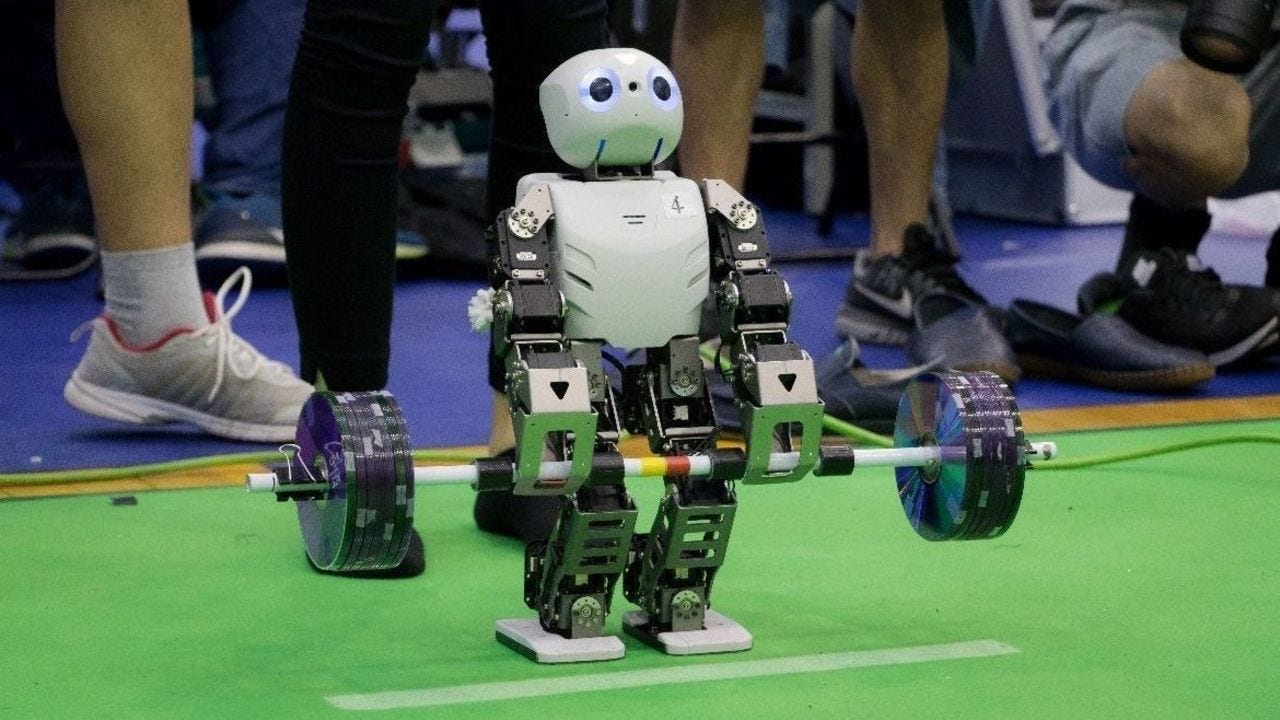2020: Year of the Autonomous Bench Presses
Futurists have claimed for several years that gone are the days of manual bench presses. Elon famously said in 2014, “Before the end of this year our bench presses will be able to perform full self-lifting. All our presses are fitted with the same technology that lifts the falcon wings. It’s just a matter of turning it on.” But 2014 came and went, and people are still sweating it out in the gym.
Lifting weights is one of the oldest sports practiced by humans. Milo of Croton, a 6th-century Greek wrestler, is said to have achieved the ability to lift a bull by lifting a newborn calf every day as it grew to maturity. Several iterations on different ways to lift weights have, over the years, crystallized into the current versions of Squat, Deadlift, and Press (overhead/bench). Most universities and technology companies have focused on automating the bench press since it is the most dangerous of all the lifts and has the economic benefit of eliminating the spotter. Bench press technique has remained relatively constant over several centuries. “Except for the Smith machine, there hasn’t been any major innovation in the way people press. This industry is ripe for disruption.” says Stewart Richard, the CEO of VunComplex, a startup working in this space.
The DARPA grand and urban challenges kickstarted the current frenzy in the self-lifting domain. Stanford and CMU, having won the grand and urban challenge respectively, gave investors the confidence that machines could one day lift better than humans. However, it was only after the thawing of AI winter, that this became computationally feasible. Not very unlike Milo of Croton, today’s neural networks train with progressively larger data sets. As the data sets grow, so does their precision and recall, statistical terms used to measure performance. But there was still a fundamental problem to be solved. The accurate position of the bar must be fed as an input to the AI for it to generate the actuation signals for the hydraulic pumps. One of the meeting notes by Travis read, “Laser is the sauce.” This is a reference to Lidar. Lidar is a sensor that accurately measures the distance of the bar from the bench by shooting a photon upwards from the bench. This photon gets reflected by the bar and arrives back at the sensor. Since we know the speed of light, measuring the time taken by the photon yields the height of the bar. There are disbelievers in using this technology. Elon, during his autonomy event, said, “Everyone using Lidar is doomed. They are optimizing themselves towards a local minimum. Humans don’t send out photons and measure the time of flight to figure out how high the bar is. Which is why our Falcon wings use stereo cameras and neural networks to determine the height of the door.” This is a contrarian stand in the industry, even though some in the industry contend that, in actuality, the wings might just be using position encoders.
Not all self-lifting bars are cast equally. Society for powerlifting engineers has defined five levels of autonomy. Level 0 includes warning systems like AES (Automatic Emergency Spotting), IEA (Inflated Ego Avoidance), etc. Level 1 and 2 is where the machine starts lifting the bar on its own. However, the athlete is still required to have arms on the bar at all times. They must be ready to break a fall in case of a machine malfunction. In Level 3 and 4, the machine will lift the bar entirely autonomously but only at Gold’s Gym. Level 5 means the machine can lift the bar autonomously at any Gym.
Since the technology pieces exist in theory, the major hurdle to widespread adoption is psychological and legal. During a traditional press, you could sue the person spotting you in case of a mishap. But who is liable if a self-lifting bar drops onto your chest. Is it the gym that installed the system? Or the company that manufactured the device? Or the developer who was git blamed to have introduced the bug. What about the person who reviewed the code? The other issue is the willingness to adopt. At a recent gym in Phoenix, Arizona, where self-lifting trials are underway, many athletes were not pleased. “What is the point of coming to the gym and lying on the bench while the machine lifts the weights for you. I could have just watched a video of someone lifting from the comfort of my home,” says Alex.
Still, the safety benefits of self-lifting bars are undeniable. An analysis by McKinsey projects that by 2025 self-lifting bars will be saving more than 10 lives every year. With the boomers entering retirement en masse, geriatric self-lifting is poised for exponential growth as aching joints, and lower bone densities necessitate machine assistance. “At the start of the hype cycle, you have your naysayers who are resistant to change. We saw the same phenomenon when email started rolling out. Purists refused to use them, saying a monospace font can never be personal like a handwritten letter is. Today they say the same thing about feeling the weight of the bar on their chest. It’s just a matter of time.” says Steve, a consultant at McKinsey.
With several big companies entering the fray, 2020 seems poised to be the year of mass adoption. I cannot wait for the day when I can step into a gym, lie down on the bench, select the weight and reps that I would like to lift, and then read a book while the machine does the lifting.
Disclaimer: The author of this article does not receive any compensation from any of the companies mentioned in this article. We cannot say the same about Gold’s Gym, though.

